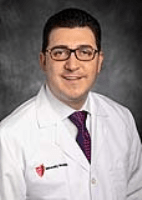 MedicalResearch.com Interview with:
Michael A. Weiss, MD, PhD
MedicalResearch.com Interview with:
Michael A. Weiss, MD, PhD
The Cowan-Blum Professor and Chairman of the Department of Biochemistry Distinguished Research Professor and Professor of Medicine in the Endocrine Division at the Case Western Reserve School of Medicine in Cleveland, Ohio.
 Joseph Racca
Joseph Racca
Researcher and graduate student
Department of Biochemistry
Case Western Reserve School of Medicine in Cleveland, Ohio.
Medical Research: What is the background for this study? What are the main findings?
Response: The function of the gene responsible for male differentiation,
sex-determining
region of the
Y chromosome (SRY), was first demonstrated in transgenic mouse models by P. Koopman, R. Lovell-Badge and colleagues in the early 1990s. These findings were corroborated by identification of mutations in human SRY that are associated with human sex reversal: XY, 46 gonadal dysgenesis leading to somatic sex reversal (Swyer’s Syndrome). Such mutations may occur spontaneously in spermatogenesis or be inherited. The characterization of the molecular defects associated with these mutations has unmasked novel biological and biochemical activities of SRY. More broadly, such studies have also increased our understanding of an entire family of related transcription factors (Sry-box related; SOX), which broadly function in metazoan development (from worms, fish and flies to mammals). Within human SRY, the majority of clinical mutations occur in the region of the protein responsible for specific DNA binding and DNA bending, the primary molecular actions of SRY at target genes. Our study bridges structure (
i.e., protein folding and stability) and function (
i.e., transcriptional activation of target genes and related cell-biological processes such as trafficking and proteosomal degradation).
In our current study, we highlighted the importance of a structural scaffold in human SRY, specifically a key single amino acid that buttresses the unique L-shape structure of this domain. The mutation of interest represents a “perfect storm” leading to deleterious effects on multiple activities, including specific DNA binding, cellular localization, and both protein and cellular stability (lifetime), among other properties, together leading to sex reversal and cancer (gonadoblastoma) in the proband patient. Our integrated multi-disciplinary approach allowed us to characterize these various facets of SRY in the context of its biological site of action: the pre-Sertoli cell in an embryonic gonadal ridge just prior to its morphological differentiation into a testis. We are grateful to Prof. Patricia K. Donahoe (Harvard Medical School and the Massachusetts General Hospital), who generously provided this micro-dissected pre-Sertoli cell line.
(more…)



























